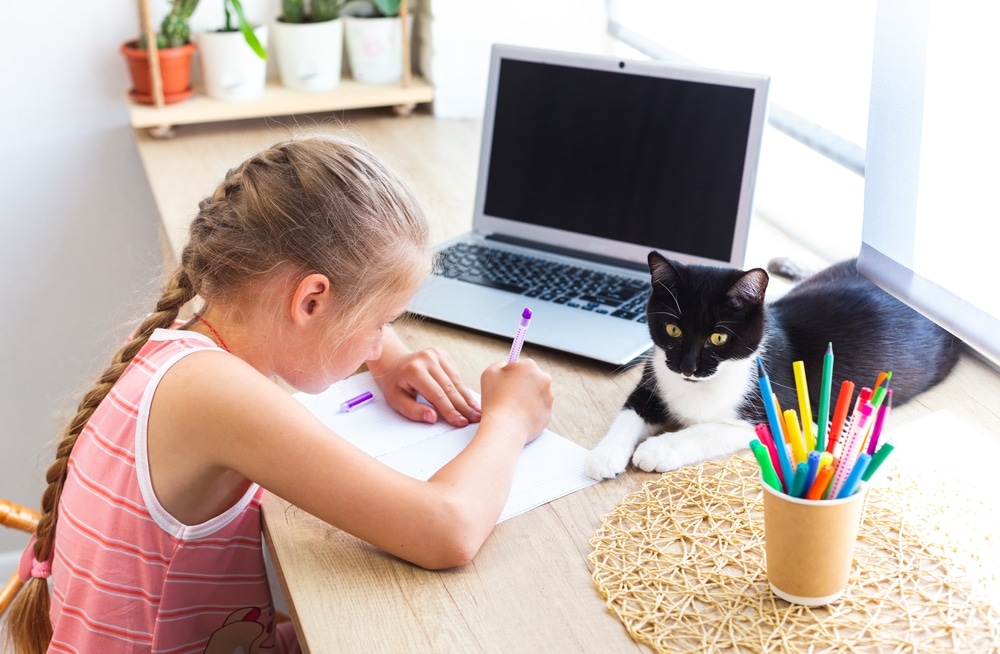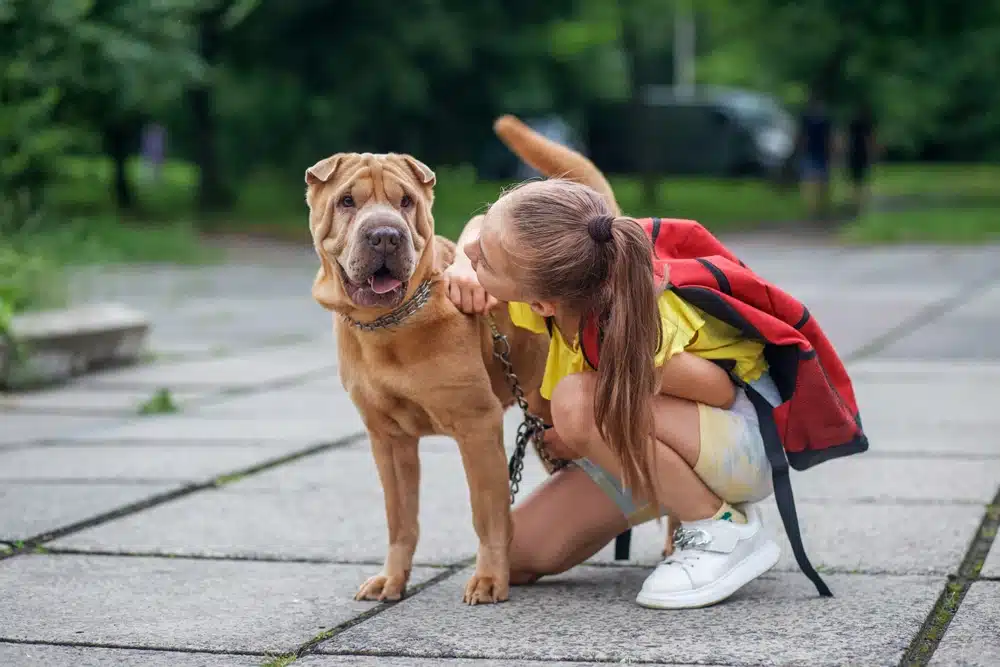A new school year is exciting! However, amidst the excitement, it’s important to remember that your pet may not be thrilled about the sudden change to their daily routine. The switch from having a full house all day to spending long periods alone can be anxiety-inducing. Our Pets & Friends Animal Hospital team wants to help you understand potential stressors for pets going through this transition period and how to help them adjust to the change. Keep reading for our tips to help your pet manage the transition stress-free.
Recognize common signs of separation anxiety
Stress and separation anxiety can be common in pets who aren’t used to an empty house. Signs of separation anxiety to watch for include:
- Increased barking or whining
- Excessive panting or drooling
- Trembling
- Scratching or chewing furniture
- Urinating or defecating inappropriately
- Attempting escape
To prevent your pet from developing separation anxiety, take steps to help your furry friend gradually adjust to their new schedule.
Ease your pet into a new schedule
During the school year, your pet will spend more time alone, which means walk and meal times may have to be adjusted. Start taking your pet for walks at the new times well before school starts. If your pet’s mealtime will change, start gradually moving their feeding time now. This will help your pet become comfortable with the new routine so they can adjust before school starts. If your pet has a hard time, consider having a neighbor or friend look in on your pet during the day.
Practice calmly leaving the house
Prolonged good-byes can increase your pet’s anxiety, as they learn to associate body language and over-the-top attention with you leaving. Leave and return to the house swiftly and casually so your pet isn’t overwhelmed or confused. Consider giving your pet a toy or treat the first few times so they are distracted as you leave.
Leave your pet with entertainment
Going from a loud, bustling house to a silent one is a big and often scary adjustment for your pet. Leave music or a TV show playing until your pet is comfortable alone. Provide your pet with toys that will provide mental stimulation and appease boredom, such as a frozen filled Kong or a licki-mat.
Keep toxic foods out of reach
Keeping your pet safe and healthy will help ensure back-to-school time goes smoothly. When packing lunch boxes for your kiddos, be mindful about keeping your pet out of the kitchen and thoroughly cleaning up after yourself. Encourage children to throw away scraps and put away lunch boxes promptly after getting home. Foods commonly found in lunchboxes and backpacks, like chocolate, grapes, raisins, and sugar-free gum, are toxic to pets and could lead to an emergency situation.
Safely store school supplies

Keep your kid’s school supplies safely stored in drawers or cabinets that your pet can’t access. Most children’s school supplies are non-toxic these days, but ensure you buy only supplies labeled with the letters AP (approved products). However, even non-toxic supplies can be dangerous to pets when ingested. Crayons, colored paper, and glue sticks can look like new chew toys but can cause choking or an intestinal blockage in pets. Remind your kids to keep all school supplies put away when they’re not in use.
Back-to-school is a big change for people and pets alike, but it doesn’t have to be a stressful one. With these tips, your pet will be ready for a new schedule that benefits you and keeps them happy. If you have any concerns about your pet’s well-being or need help with the adjustment, contact our Pets & Friends Animal Hospital team.

